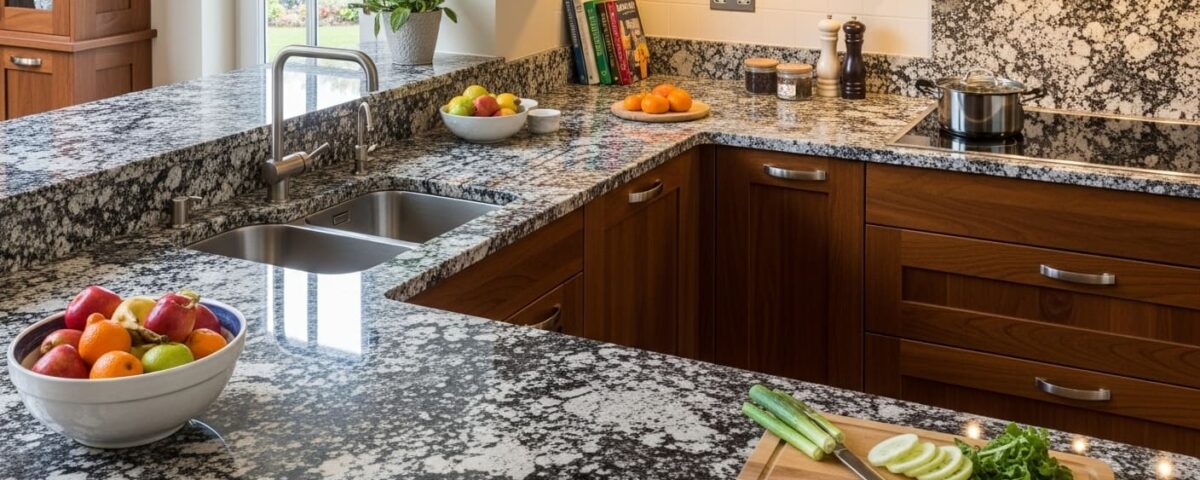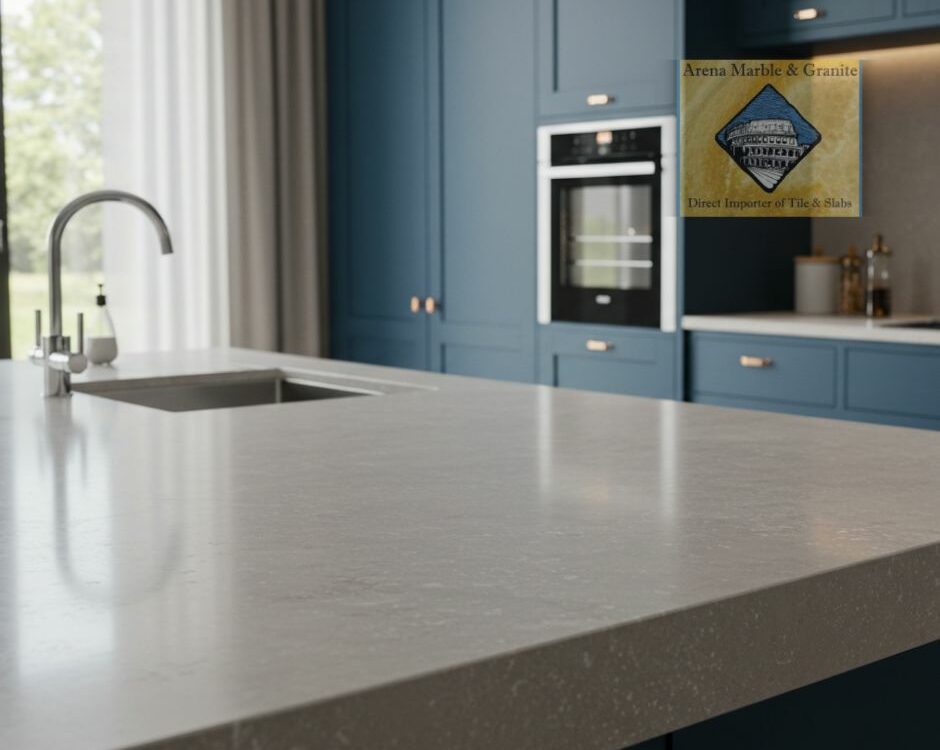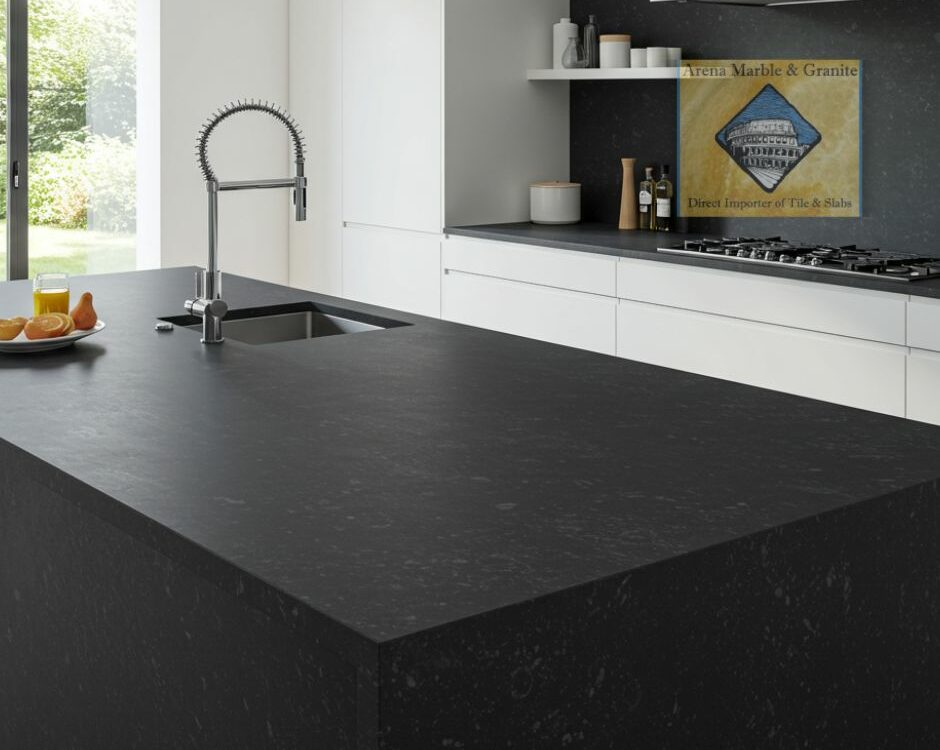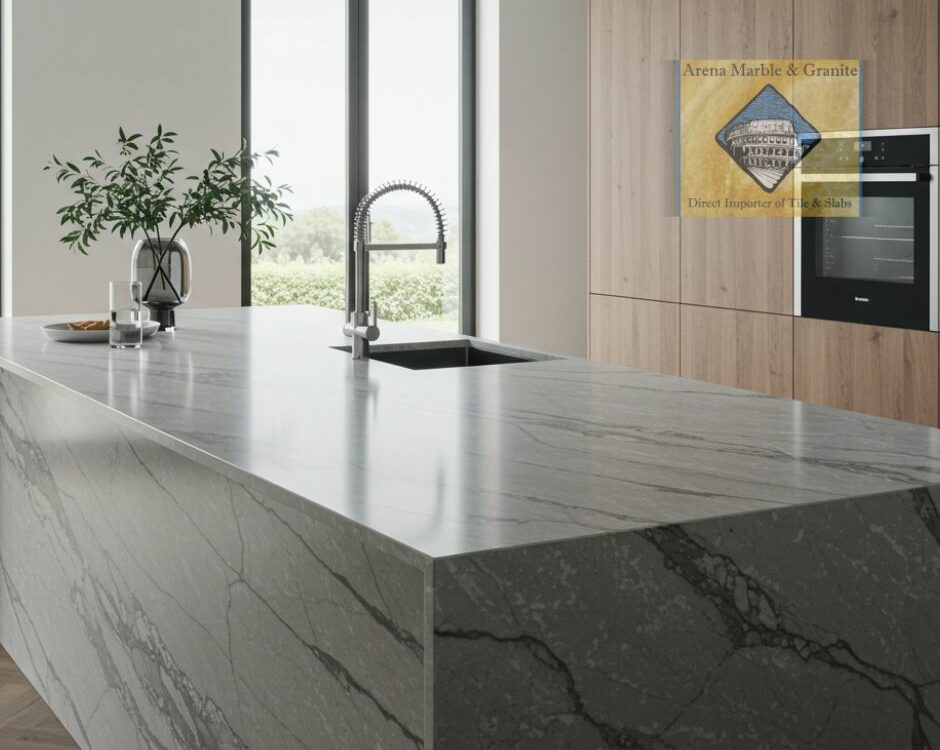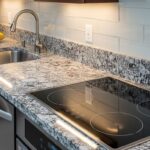
Best Granite Kitchen Countertop Installers in Thousand Oaks CA
October 6, 2025
Granite Kitchen Countertop Maintenance in Thousand Oaks CA
October 10, 2025Talking about the price of granite kitchen countertops in Thousand Oaks can feel like discussing the weather—everyone has an impression, yet conditions shift from home to home. The truth is, granite embraces a wide spectrum of characteristics, and the investment reflects choices about stone, layout, and craftsmanship rather than a single, simple number. As someone who has helped neighbors from Oak Park to Newbury Park navigate these decisions, I have learned that clarity about the factors shaping your budget is the most empowering tool you can carry into a showroom. If a kitchen countertop remodel is on your horizon, understanding the variables will let you plan with confidence without getting trapped in guesswork.
Stone Selection: Color, Pattern, and Rarity
Granite arrives with its own personality. Some slabs present a quiet, consistent grain that suits minimalist spaces, while others swirl with dramatic veining that can turn an island into a centerpiece. Stones that are rarer or more complex to quarry often command more attention in the market. Even within a single name, color intensity and mineral composition can vary, influencing both availability and desirability. In Thousand Oaks, where sunlight plays a starring role in the kitchen, the way a stone interacts with light can elevate its appeal and, by extension, the level of investment it typically attracts.
Finish adds another layer of character. Polished, honed, and leathered surfaces each change how the stone reads and how it fits into your daily routine. Some finishes require extra steps in fabrication, which can influence the overall plan. Selecting a stone that aligns with your design and maintenance preferences is the first step to a satisfying outcome.
Slab Size, Thickness, and Yield
Your layout drives how efficiently a slab is used. Large islands, long runs, or L-shaped counters affect how slabs are cut and how many are required. Standard thicknesses cover most needs, while a mitered edge or a thicker appearance can add presence to a space that calls for it. Yield—the ratio of usable pieces to offcuts—matters. A design that makes smart use of a slab minimizes waste and supports both visual continuity and planning efficiency.
When I walk a project, I look for opportunities to align the layout with the stone’s natural rhythm. For example, orienting veins to run the length of a long counter creates a calmer visual and often makes seam placement more logical. These decisions do not just shape aesthetics; they influence how efficiently materials are used.
Edge Profiles and Design Details
Edges are the finishing touch you feel every day. Simple, eased edges offer a clean look and are at home in modern spaces. Softer profiles like half bullnose bring a transitional warmth that suits many Thousand Oaks kitchens. For standout islands, a mitered edge can create a thicker, monolithic appearance. Each profile involves different levels of shaping and polishing, which can influence project planning. The choice should arise from how you use the kitchen as much as how you want it to look.
Design details extend to backsplashes and return heights. A full-height stone backsplash is striking, especially with bold veining that rises behind the range. Standard short returns provide a crisp frame for a tile field. Both approaches are beautiful when thoughtfully paired with the slab’s pattern and the kitchen’s light.
Cutouts, Sinks, and Cooktops
Undermount sinks and slide-in ranges are beloved for the streamlined look they bring to granite. Each cutout is fabricated and polished with care, and complex configurations—multiple faucet holes, soap dispensers, instant-hot taps—require planning. The decisions you make about sink style and accessories affect how the stone is prepared and how the room ultimately feels. An apron-front sink, for instance, introduces a distinct line where stone meets ceramic or steel; it is handsome but requires precise templating and a steady hand during installation.
For larger islands, many homeowners in Thousand Oaks relocate cooktops or add prep sinks to support how they actually cook and entertain. These choices enrich the kitchen’s function and influence how pieces are cut and seamed.
Seams, Vein Matching, and Visual Flow
Seams are part of the language of stonework. In a perfect world, every counter would be a single, unbroken piece, but doorways, stairwells, and slab sizes make seams a reality. The aim is not to eliminate them at all costs; it is to place them where they are quiet. Matching veining across a seam requires both careful planning and shop craftsmanship. When done well, seams become transitions rather than interruptions, and the stone’s story reads continuously across the room.
In homes with generous islands and open-plan layouts, a waterfall edge down one or both sides can be transformative. It highlights the stone’s linearity and gives the island an architectural presence. Executing waterfalls gracefully involves precise mitering and attention to grain direction. These choices are as much about outcome as they are about project planning, so it is worth discussing them early.
Demolition, Cabinet Readiness, and Site Conditions
Before granite can be set, the stage must be prepared. Removing existing counters, confirming cabinet levelness, and ensuring clear access paths are the groundwork for a smooth installation day. In Thousand Oaks neighborhoods with mature landscaping or sloped driveways, crew access is a practical consideration. Thoughtful planning here prevents delays and protects your home during a period of transition.
If you are keeping existing cabinets, a site check verifies that boxes are secure and ready for the weight of granite. Minor shimming and adjustments are normal and are part of ensuring that counters sit perfectly plane. Attention to these fundamentals is one of the quiet ways experienced teams deliver lasting results.
Indoor-Outdoor Projects and Continuity
Many local homes extend the kitchen experience to a covered patio or outdoor bar. Coordinating stone selections across indoor and outdoor zones creates a sense of flow. Exterior settings, however, introduce sun exposure and seasonal shifts. Choosing appropriate slabs and planning for maintenance means your investment holds up gracefully across environments. The continuity you gain often justifies the extra coordination, especially when gatherings spill effortlessly from island to grill.
Planning, Communication, and Value
Value in a granite project grows from clarity. When design intent, stone selection, and fabrication plans align, you avoid missteps that can lead to changes midstream. The best partnerships make communication feel effortless. You should feel invited to review vein layouts, discuss seam strategies, and consider edge profiles with samples in hand. That dialog turns a complex process into a guided journey with fewer unknowns.
As you weigh your options, think about where the eye will rest. If your kitchen has a long, sunlit run, perhaps that is where the most expressive section of the slab belongs. If the island is your gathering place, let it showcase the stone’s character. Making the right moves in the right places is a smart use of resources and yields a kitchen that feels tailored to how you live.
Making the Most of Your Investment
There are thoughtful strategies to keep your project aligned with your priorities. Choose stones that harmonize with your cabinets and floors so you do not feel compelled to rework other elements. Consider finishes that suit your maintenance style—polished for easy wipe-downs, honed or leathered for subtlety and texture. Simpler edge profiles bring timeless calm and allow the stone’s natural beauty to carry the design without distraction.
Seam planning pays dividends. Early conversations about where a seam will land and how a pattern will cross it make the final result feel continuous. For busy households, planning generous, uninterrupted sections near prep zones can be more satisfying than adding secondary features you will rarely use.
Local Light and Granite Character
Thousand Oaks light has a way of revealing nuance. In the morning, soft shadows play across honed surfaces; in the afternoon, polished granites glow. When you view slabs, imagine them in your home at different times of day. That mental walkthrough is one of the simplest ways to choose confidently. Bring a cabinet door and a flooring sample to see undertones in context, and trust your eye when a stone feels instantly at home.
If you reach a point of decision fatigue, pause and return to your original intent. Were you drawn to a calm, neutral canvas or a bold, expressive centerpiece? Let that guide not only your selection but also where you showcase the stone in the room. This alignment is the essence of value—every choice reinforcing the kitchen you set out to create.
Clarity Without Numbers
It can be tempting to search for a single answer, a one-size-fits-all figure that explains everything. But kitchens, like the families who use them, are particular. Your layout, your light, your cooking habits, and your design goals shape the plan. Rather than chasing a moving target, invest your energy in understanding the variables, previewing slabs, and discussing details with a team that welcomes your questions. The more specific your picture, the more satisfying your outcome.
If you are balancing multiple priorities—timeline, finish selections, and coordination with new appliances—put them on paper and review them with your fabricator. This simple exercise often reveals where your efforts will have the greatest impact, turning a complicated project into a series of clear, confident steps in your kitchen countertop remodel.
Frequently Asked Questions
1. What factors influence the investment for granite countertops?
Stone selection, finish, slab yield, edge profile, seam strategy, cutouts, and site conditions all play a role. The layout of your kitchen and the design choices you make determine how efficiently materials are used and how much craftsmanship is required to achieve your vision.
2. How can I plan a project without focusing on numbers?
Start with priorities—durability, look, and function—and select a stone that satisfies them. Confirm details early, such as seam placement and edge profile, and review the slab layout so the most beautiful parts of the stone land where they will be appreciated. Clarity about intent keeps the project on course.
3. Are certain finishes better for busy households?
Polished granite is easy to wipe down and reflects light for a bright feel. Honed and leathered finishes soften glare and add texture that can disguise minor fingerprints. The right choice depends on your lighting and how you like a surface to feel under your hands.
4. Do indoor-outdoor projects change planning?
They do, in a good way. Coordinating stones across spaces creates flow, but exterior conditions introduce sun, temperature shifts, and exposure considerations. Selecting suitable slabs and planning maintenance ensures longevity while preserving harmony between zones.
5. Why does seam planning matter so much?
Seams are opportunities to guide the eye. When aligned with the stone’s pattern and placed where attention is minimal, they support a continuous visual story. Thoughtful planning turns seams into subtle transitions that enhance the room rather than distract.
Get the Best Granite Countertop Value with Arena Marble and Granite
If you are mapping out a granite project and want a clear, guided path, let’s talk about the details that will shape your results. From stone selection to vein layout and finish, every choice can serve your priorities. Begin your kitchen countertop remodel with a team that helps you turn variables into a vision you will enjoy every day.
Upgrade your kitchen with stunning granite surfaces at competitive prices. Contact Arena Marble and Granite in Thousand Oaks, California, to explore premium countertop options that combine beauty, quality, and lasting value for your home.
Read more:
Granite Kitchen Countertop Maintenance in Thousand Oaks CA
Best Granite Kitchen Countertop Installers in Thousand Oaks CA


